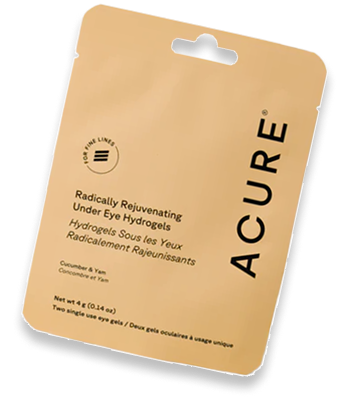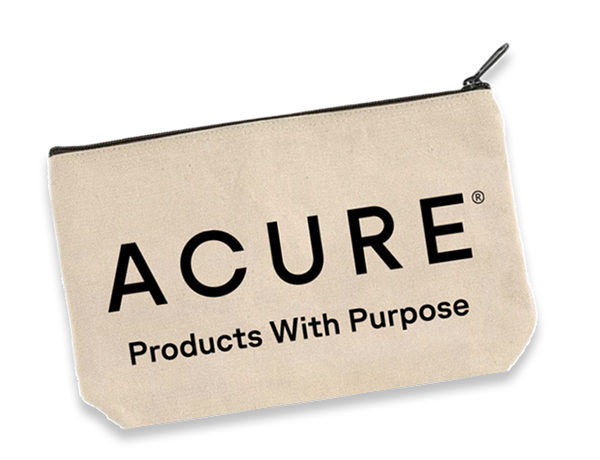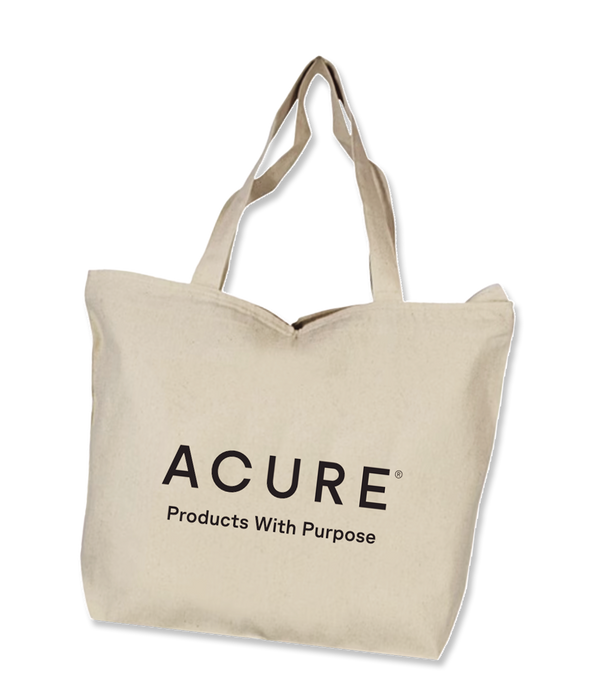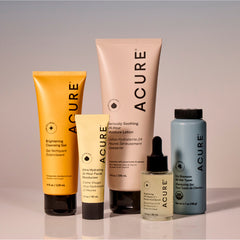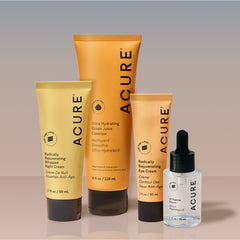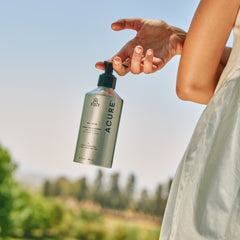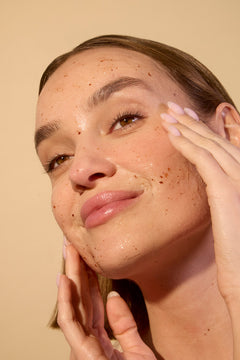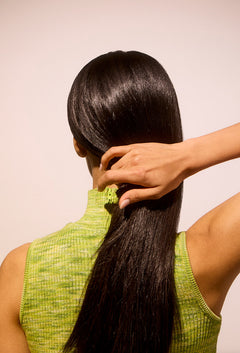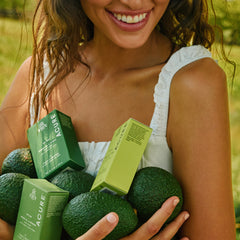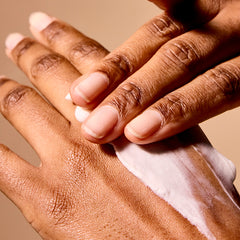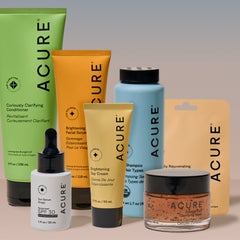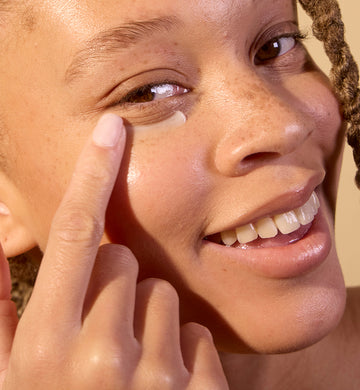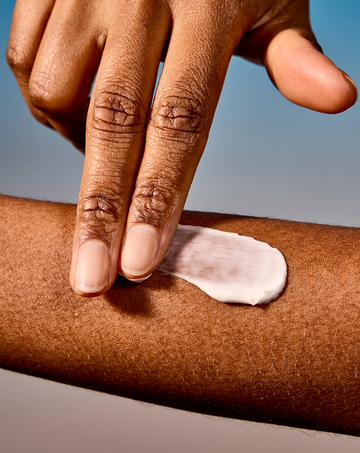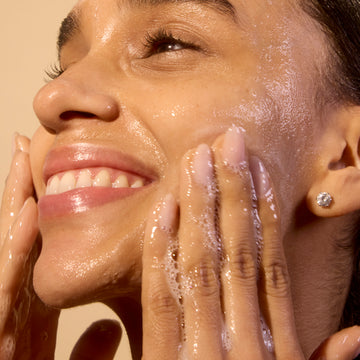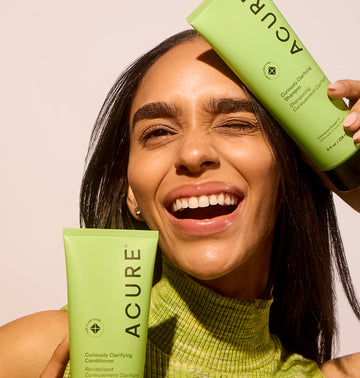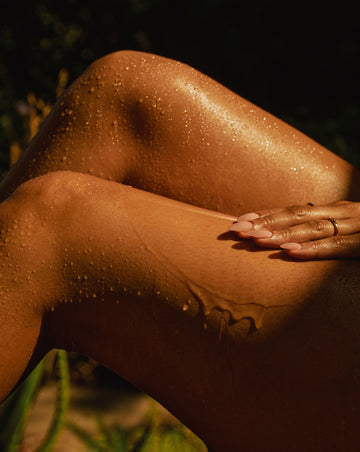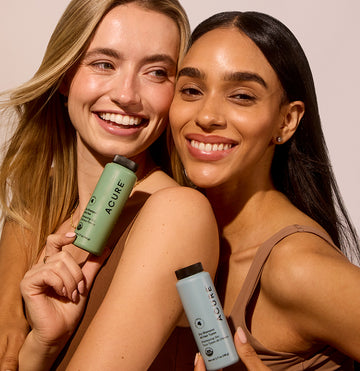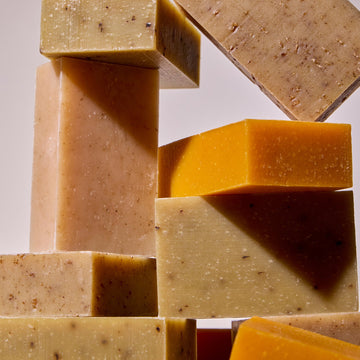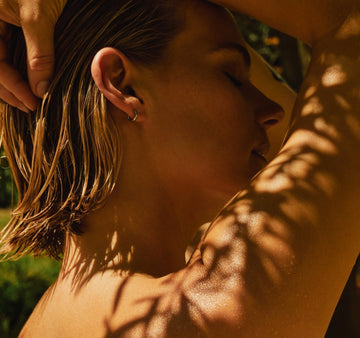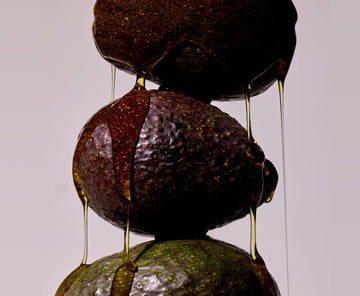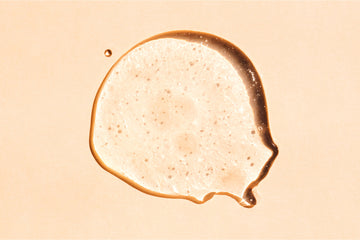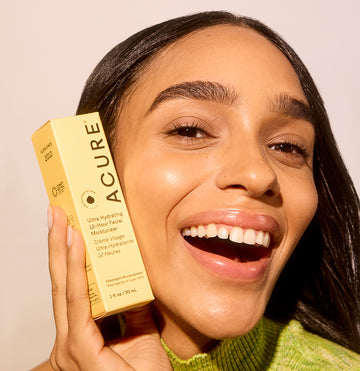Years of sun exposure can leave their mark—literally. Whether it’s that one stubborn spot on your cheek or a cluster across your shoulders, sun spots are one of the most common effects of UV damage. The good news? You can treat them gently, naturally, and effectively.
This guide is your go-to resource for sun spot treatment using safe, plant-based ingredients. We’ll explore how to identify sun spots, how they’re different from freckles or skin cancer, and how to build a natural skincare routine to fade them over time—powered by Acure’s clean, vegan philosophy.
What Are Sun Spots on Skin?
Sun spots (also known as solar lentigines or age spots) are flat, brown or tan patches that develop on skin with frequent sun exposure. They’re commonly found on the face, chest, shoulders, and hands—anywhere the sun hits often.
Why Do Sun Spots Happen?
Sun spots form when UV rays trigger melanin production in the skin. Over time, repeated exposure leads to concentrated pigmentation in certain areas. The risk increases with:
- Age (especially 40+)
- Fair skin tones
- Extended time spent outdoors (think: lifeguards, hikers, gardeners)
Wearing mineral sunscreens daily is one of the best ways to prevent them.
Are Sun Spots Harmful?
Not usually. Sun spots are considered benign and cosmetic—meaning they don’t pose a health threat. But many people choose to treat them for a more even, radiant complexion.
That’s where natural skincare comes in. Botanical ingredients can gradually brighten dark spots without harsh chemicals or side effects, making them a perfect match for a conscious skincare routine.
What Are the Best Natural Sun Spot Treatment Remedies?
Many natural ingredients are known to help fade discoloration, even skin tone, and support barrier repair. Here’s a breakdown of some of the best options available today:
Vitamin C
A proven brightening superstar, vitamin C helps lighten hyperpigmentation, boosts collagen, and protects skin from future UV damage.
Try:
- Vitamin C serum
- Acure’s Brightening Day Cream with Vitamin C
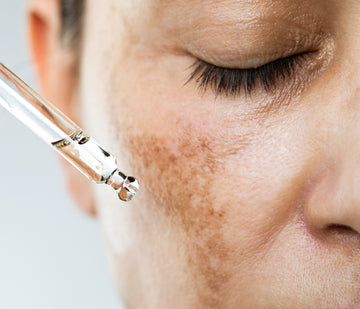

Licorice Root
Licorice root extract helps inhibit melanin production, reducing the appearance of dark spots over time. It’s gentle and especially effective for sensitive skin types.
Look for it in botanical-rich serums or toners for daily use.
Aloe Vera
This soothing powerhouse helps reduce inflammation and redness while hydrating skin. It’s often used to help sun-damaged skin bounce back and support healing.
Look for it in lightweight moisturizers, masks, or after-sun products.
Green Tea Extract
Packed with antioxidants, green tea extract helps protect skin from free radicals, reduce redness, and brighten tone. Bonus: it’s naturally calming.
Apple Cider Vinegar
ACV contains natural acids that may gently exfoliate and fade discoloration, though it should always be diluted and patch-tested before use.
Note: Some skin types may find ACV too harsh—consider starting with professionally formulated products before DIY versions.
How Long Does It Take for Natural Treatments to Work?
Natural remedies take time—but they work. With consistent application, expect visible improvements within 4–12 weeks.
For best results, pair your treatment routine with daily use of mineral sunscreens to protect healing skin and prevent new sun spots from forming.
What’s the Difference Between Sun Spots and Freckles?
|
Trait |
Sun Spots |
Freckles |
|
Onset |
Later in life (40+) |
Childhood or early teens |
|
Triggered By |
UV exposure + aging |
Genetics + sun exposure |
|
Persistence |
Stay year-round |
Often fade in winter |
|
Size/Shape |
Larger, more uniform in color |
Small, scattered |
How Can You Tell the Difference Between a Sun Spot vs Skin Cancer?
Most sun spots are harmless, but it’s important to monitor your skin. Here’s a quick breakdown:
- Sun spots: Flat, tan to dark brown, round/oval, clearly defined borders.
- Skin cancer: May itch, bleed, grow rapidly, or have asymmetrical shapes or uneven coloring.
Follow the ABCDEs of skin cancer:
- Asymmetry
- Border irregularity
- Color variation
- Diameter larger than a pencil eraser
- Evolving shape or size
When Should You See a Dermatologist About a Sun Spot?
Consult a professional if you notice a spot that:
- Changes shape or color
- Becomes raised, itchy, or bleeds
- Appears suddenly or looks different from others
Even when using natural skincare, a professional diagnosis is crucial to rule out skin cancer.
How Do You Prevent New Sun Spots from Forming Naturally?
Prevention is everything. Here’s how to naturally protect your skin:
- Apply SPF 30+ every day, rain or shine ([try this sunscreen serum])
- Wear wide-brim hats and UV-protective sunglasses
- Stick to shady spots when outdoors
- Avoid sun exposure during peak hours (10am–4pm)
- Use antioxidant-rich products with Vitamin C, niacinamide, and green tea
- Stay hydrated and eat a skin-supporting diet
Explore Acure’s sunscreen collection to complete your protection routine.
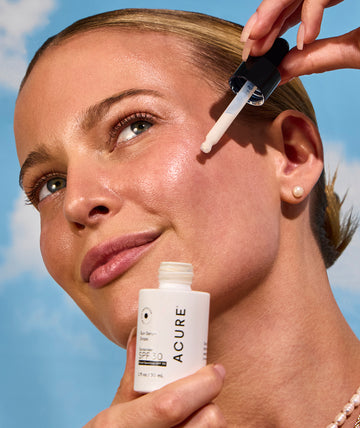
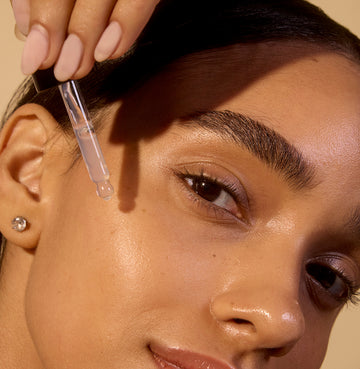
FAQ: Common Questions About Natural Sun Spot Treatment
1. Can Sun Spots Go Away On Their Own?
Not usually. While some may fade slightly, most sun spots require targeted treatment to lighten significantly.
2. Can Diet Help with Sun Spots?
Yes. Antioxidant-rich foods (berries, leafy greens, vitamin C) support skin healing and may improve tone over time.
3. Are Essential Oils Effective for Sun Spot Removal?
Some may help (like rosehip or tea tree), but they should always be diluted and used with caution—especially on sensitive skin.
4. Is It Safe to Exfoliate Sun Spots?
Yes, with gentle products. Avoid harsh scrubs. Try Acure’s gentle exfoliators to encourage cell turnover without irritation.
5. Can Sun Spots Return After Fading?
Yes—especially without daily sun protection. That’s why SPF and antioxidants are essential year-round.
Embrace Radiant Skin, Naturally!
Sun spots are common—but treatable. With patience, natural ingredients, and consistent sun protection, you can restore brightness and balance to your skin.
Celebrate your skin at every stage. Nourish it with purpose-driven, plant-powered care.
✨ Start your journey with Acure’s best-selling skincare
🌞 Target tone with vitamin C serum and Brightening Day Cream
🧴 Protect daily with our sunscreen serum
Because your skin deserves glow-worthy ingredients—naturally.
